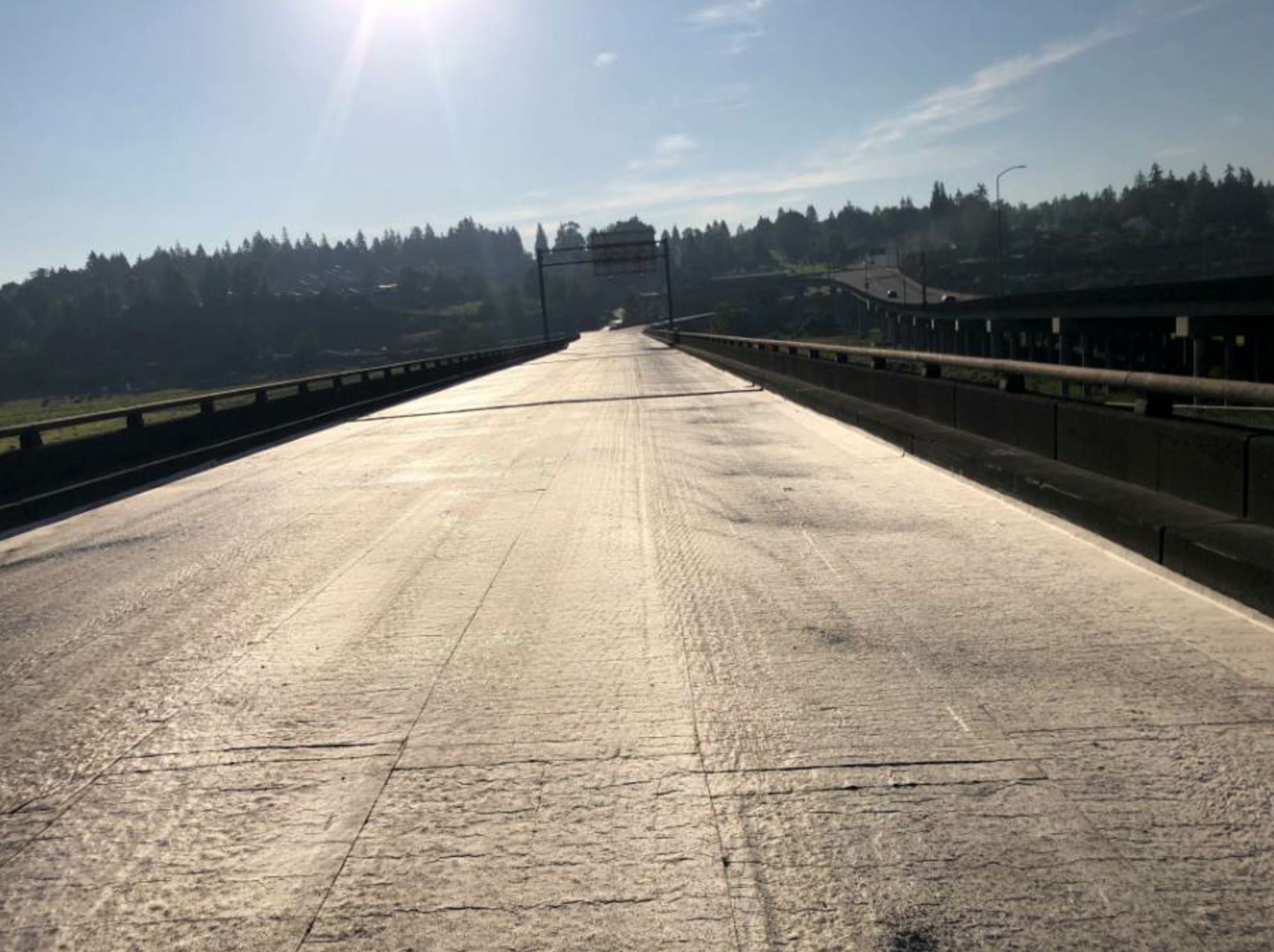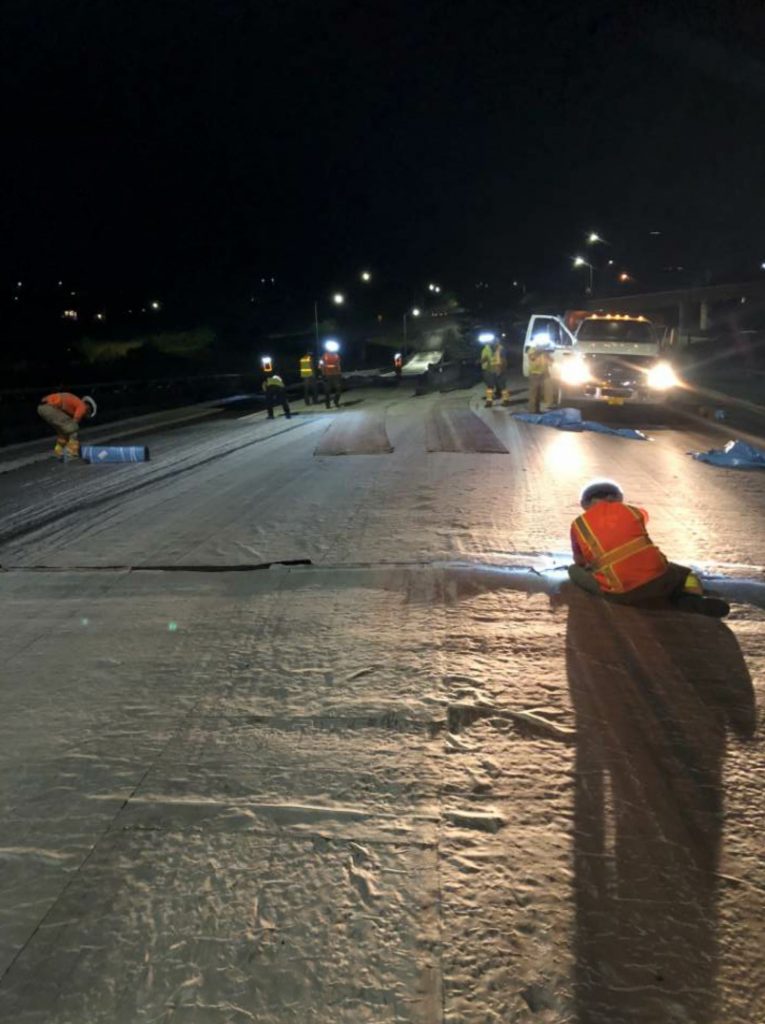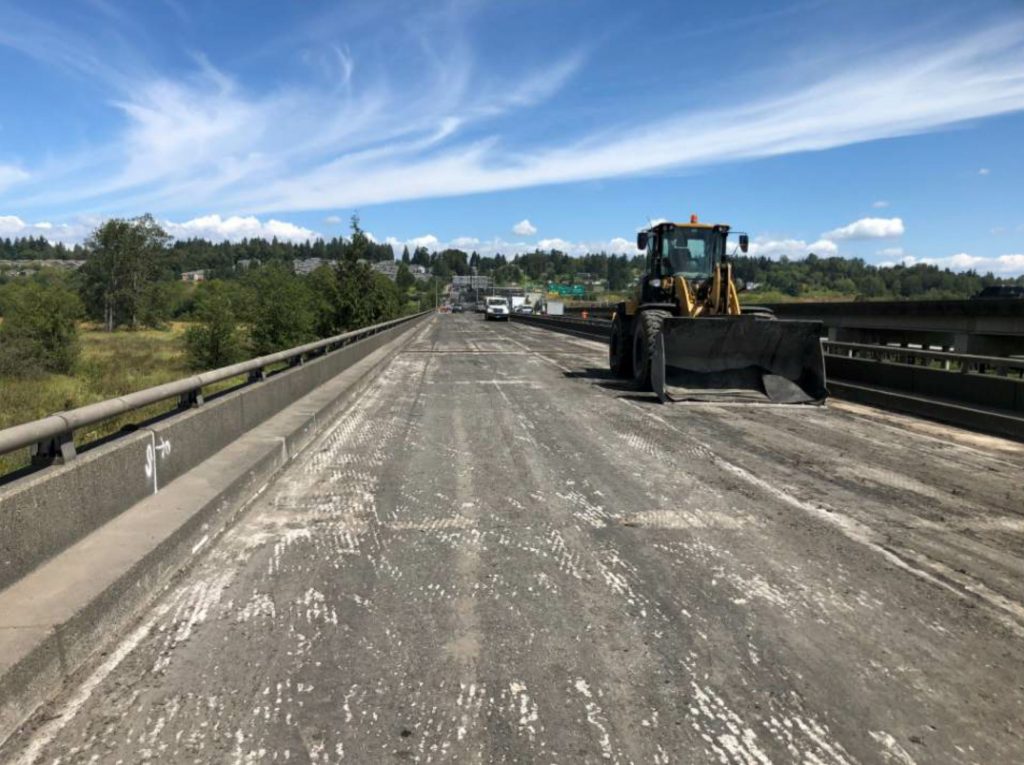How the Lakeside Team Waterproofed a Washington State Bridge
BY AsphaltPro Staff

Editor’s Note: This article includes original information provided by Crafco Inc., Chandler, Arizona, with additional information from Lakeside Industries Inc., Monroe, Washington.
All bridges and bridge decks are subject to the National Bridge Inspection Standards (NBIS). Thus, every bridge within the Washington State Department of Transportation (WSDOT) National Bridge Inventory (NBI) undergoes a detailed inspection every two years. When maintenance is required, the area’s average annual 90 days of sunshine allow only brief opportunities for the repairs. Making the most of the state’s funding packages is also imperative in supporting the transportation system and preserving critical infrastructure.

With an average daily traffic load of 22,000 vehicles, the US2/I-5 interchange represents a valuable pipeline for business and commuting.
“US 2 is a vital cross-state corridor for commuters and freight,” WSDOT Spokesperson Frances Fedoriska said. “Keeping it a reliable route for the thousands of drivers who use it every day is critical to our state’s commerce.”
FHWA Repeals Rule Limiting Innovation on Highway and Bridge Construction
The bridge’s 16-year-old pavement was finally experiencing potholes, ruts and uneven surface areas that threatened to allow water in to the concrete decking. WSDOT engineers elected to remove the existing asphalt and membrane overlay from the bridge deck, repair deteriorated areas in the bridge deck, and apply a new membrane and asphalt overlay.

Lakeside Regional Manager Jamie Lee shared that the temperature drop at night hindered productivity in removing the old asphalt; however, “the cooler temperatures at night were a huge help for laying the waterproofing fabric.”
Planning the Project
The venture would include the application of 536,000 square feet of geosynthetics, one of the largest quantities used by WSDOT for a single waterproofing project. The DOT’s Standard Specifications for Road, Bridge, and Municipal Construction called for non-woven geosynthetic materials to exhibit 150 lb. min. tear strength (ASTM D4533), 200 lb. min. grab tensile strength (ASTM D4632), and 220 lb. min. puncture resistance (ASTM D6241).
Planning, design and execution would be complicated. To avoid commuter interruptions, the project allowed for four partial closures and two full closures. Partial closures detoured traffic down to a frontage road and then merged on the bridge halfway through full closures. The majority of work would occur on weekends (7 p.m. Friday to 4 a.m. Monday), when the westbound lanes could be completely shut off to traffic.
Lakeside Industries Inc., Monroe, Washington, was selected primary contractor. The company had spearheaded a number of paving projects for the state, partnering with Jonnic Construction, Molalla, Oregon, to do the underlying waterproofing membrane. The crews would collaborate once again and WSDOT chose Crafco GeoTac® HS waterproofing membrane composed of fully modified SBS asphalt mastic on non-woven polyester geotextiles.
WSDOT would not allow milling of the existing asphalt on the trestle bridge, so teams had to remove it with excavators and small chipping guns. Lakeside also teamed up with Interwest Construction, Burlington, Washington, to help with the removal.
Lakeside Regional Manager Jamie Lee explained: “Almost the entire bridge’s asphalt was removed mechanically. We have done this before on smaller bridges in nightly closures, but this was by far the largest project I have seen with this removal method. It is an extremely slow process.”
The existing surface was milled to a depth of 1.8 inches thick. Lee shared that the temperature drop at night hindered productivity in removing the old asphalt; however, “the cooler temperatures at night were a huge help for laying the waterproofing fabric.”

Because the DOT couldn’t allow milling on the trestle bridge, Lakeside Industries worked with its subcontractors to remove the old asphalt from the deck with excavators and small chipping guns. It was a laborious process to get the deck ready for the GeoTac HS membrane.
Crews of 15 to 25 workers laying geocomposites (versus the typical 3 to 6) would be required to meet the massive manual application needs. And dozens more would be needed to manage pavement preparation and the hot-mix asphalt (HMA) overlay.
With the surface prepared, the teams attached 55-gallon drums of Crafco Asphalt Primer to pumps, spraying it evenly on the area. They then rolled out the 48-inch GeoTac HS across the center, managing the more meticulous edgework with 12-inch GeoTac HS rolls.
While typical geocomposite installs require hot mastic to be laid down between the 1-1/2-inch overlapped seams, Crafco engineers pre-tested the GeoTac HS fabrics, finding that a
4-inch overlap should sufficiently seal out moisture and debris when the HMA was applied. This resulted in savings in materials, and Crafco engineers felt it also helped the teams eliminate extraneous equipment. Workers targeted 80,000 to 100,000 feet of GeoTac HS membrane per closure.
Once installed, Jonnic used Lakeside’s rubber-tired asphalt roller already at the site to press the material down and eliminate bubbles.
Lakeside Industries’ Monroe Asphalt Plant produced a 3/8-inch HMA mix at normal temperatures. The paving crew placed it at a depth of 1.8 inches beginning Sunday morning on each weekend. Lee shared that because of weight restrictions on the bridge, solo trucks couldn’t haul full loads and rollers had to maintain a specified spacing.
Despite the difficult requirements of squeezing that much work in a small window of time, Lakeside and its subcontractors were able to complete the project using only five of the six allowed weekends.
WSDOT officials shared their thoughts about the progress. “All contractors involved with this project are committed to doing the job right, and we’ve been very pleased with their work,” Fedoriska said.
WSDOT Project Engineer Mark Sawyer knows that the proper plan is in place; now it comes down to navigating variables. “We have a few more segments left,” Sawyer said in fall 2018. “These will be completed with one more full weekend closure. The problem is finding a warm, dry weekend—dry all four days—with no big, traffic-generating events that use this highway.”
The final weekend closure occurred in August 2019, and the project team completed the paving work. A few weeks of bridge joint work and striping during nightly closures ensued and they wrapped the project up during the first week of September.
